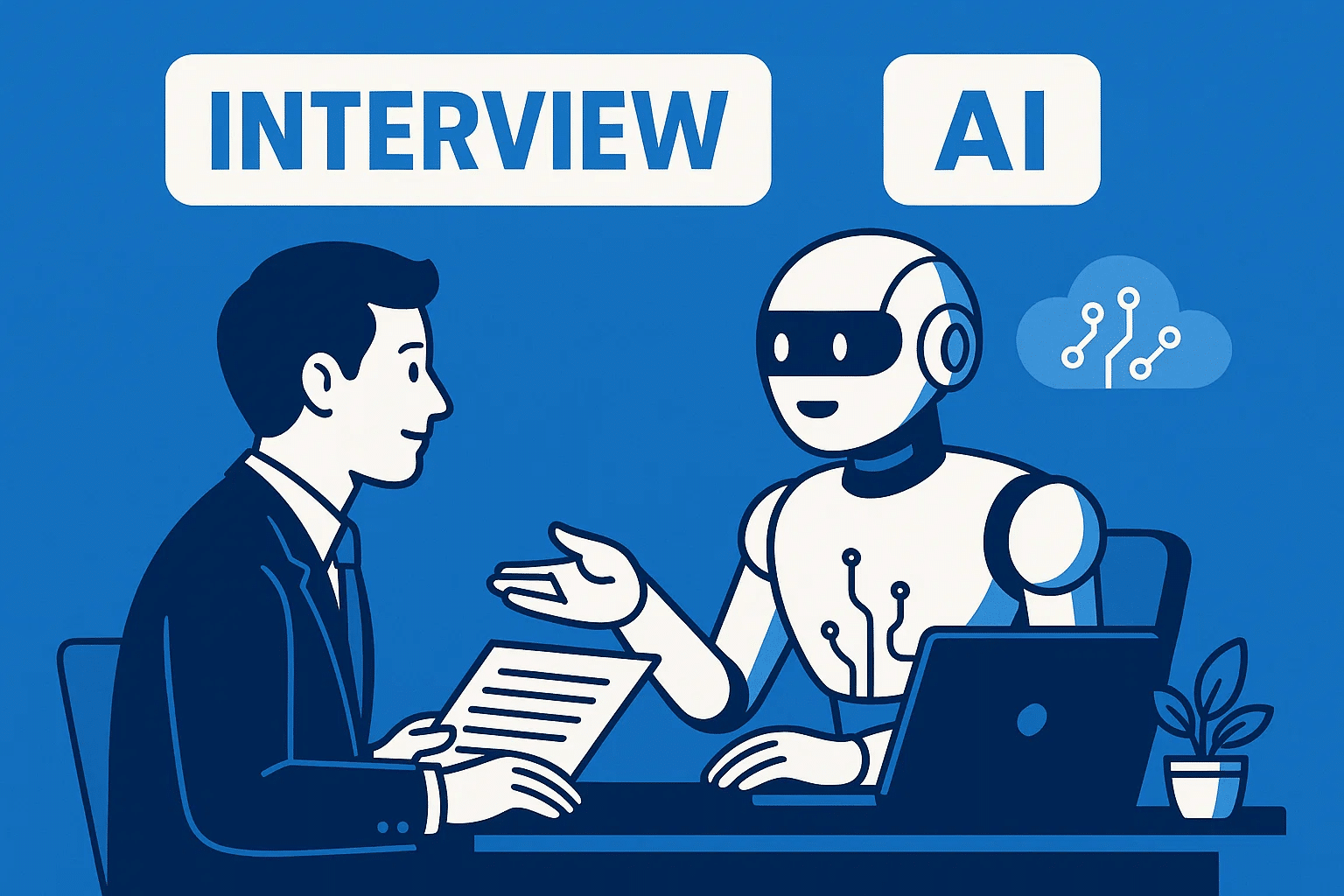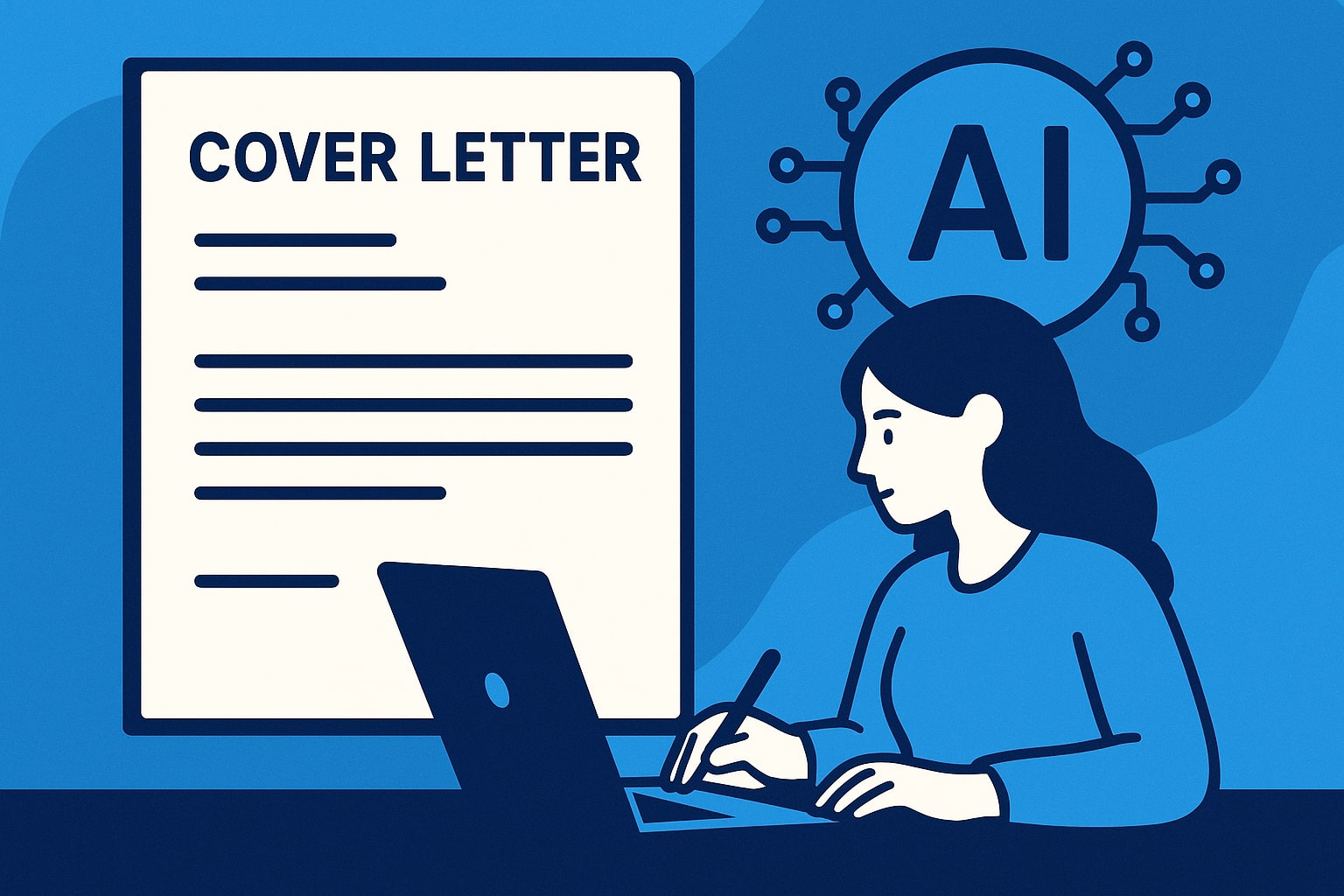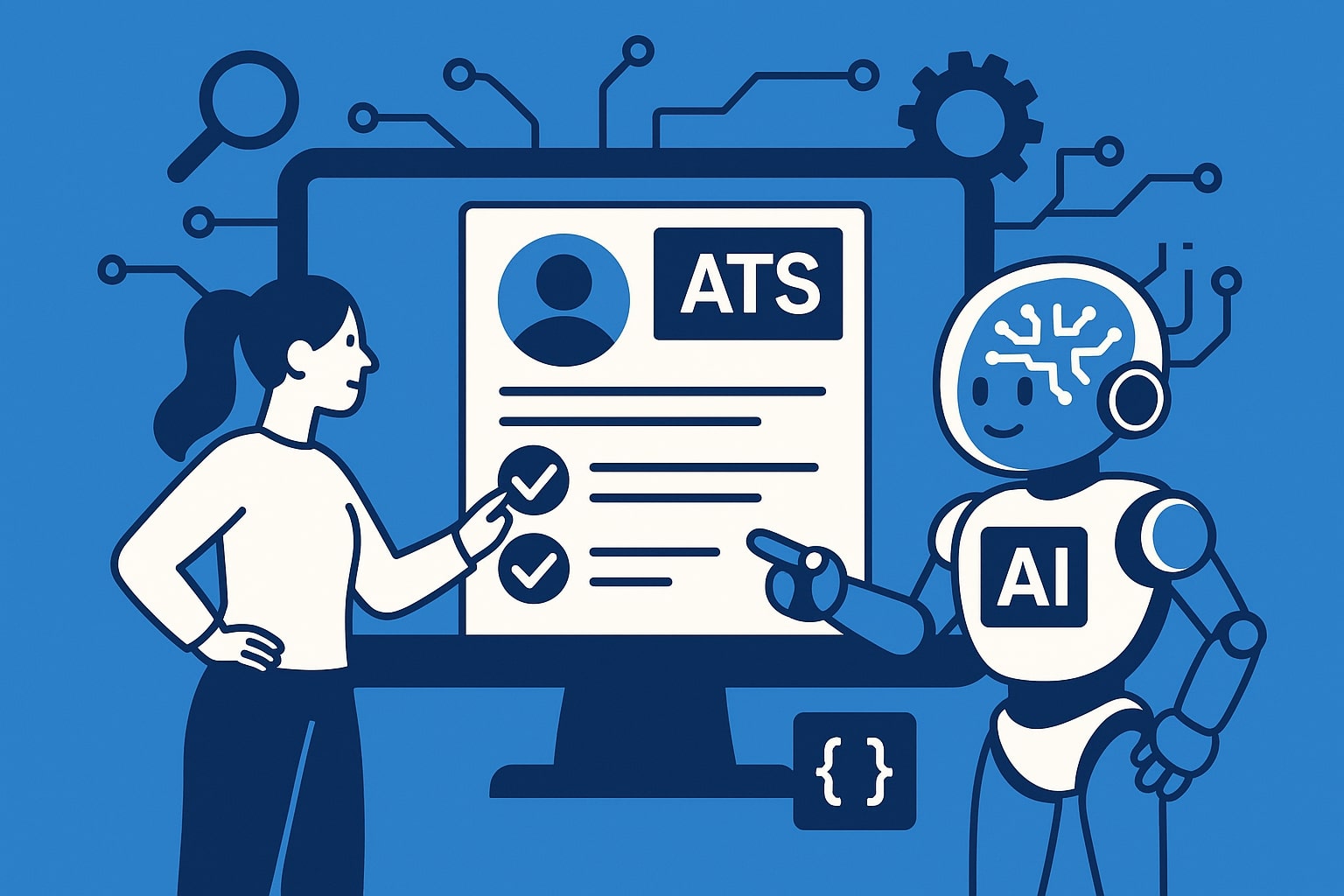Every job application you submit faces a harsh reality: recruiters spend an average of 7.4 seconds reviewing each resume. In those critical moments, a generic resume simply won’t cut it.
The difference between landing an interview and landing in the rejection pile often comes down to one crucial factor: how well you tailor your resume to job description requirements. This comprehensive guide reveals the exact strategies top candidates use to customize their applications and secure interviews at companies they once thought were out of reach.
1. Understanding Why Resume Tailoring Changes Everything
The traditional spray-and-pray approach to job applications died with the rise of Applicant Tracking Systems (ATS). Today’s hiring landscape demands precision, relevance, and strategic alignment.
When you tailor your resume to job description specifications, you’re not just tweaking a few words. You’re demonstrating that you understand the role’s requirements, speak the company’s language, and have already visualized yourself succeeding in the position. This level of customization sends a powerful message that generic resumes simply cannot match.
Consider these compelling statistics that showcase the impact of resume customization:
- 76.4% of resumes are rejected by ATS before human review
- 59.7% of hiring managers prefer tailored resumes over generic ones
- 55.3% increase in interview callbacks with customized applications
- 50.6% of job seekers who tailor resumes report higher salary offers
- 44.3% reduction in job search duration with targeted applications
- 43.4% of recruiters immediately reject obviously generic resumes
The Psychology Behind Effective Resume Tailoring
Recruiters aren’t just looking for qualified candidates – they’re searching for the perfect fit. When your resume mirrors the job posting’s language and priorities, you trigger a psychological response called cognitive ease.
This phenomenon makes it effortless for hiring managers to envision you in the role. Your carefully tailored content reduces the mental effort required to connect your experience with their needs, creating an instant sense of alignment that generic resumes never achieve.
According to LinkedIn’s career experts, tailored resumes demonstrate three critical qualities that employers value: attention to detail, genuine interest in the specific role, and the ability to communicate effectively within their industry’s context.
The Hidden Cost of Generic Applications
Sending the same resume to multiple employers might seem efficient, but it’s actually counterproductive. Generic applications waste your time on positions where you have little chance of success while missing opportunities where targeted efforts could have made you a top candidate.
Each rejection from a generic application represents more than a missed opportunity. It’s valuable time and energy that could have been invested in fewer, more strategic applications with significantly higher success rates. The most successful job seekers understand that quality always trumps quantity in the modern job market.
2. Decoding Job Descriptions Like a Pro
Before you can tailor your resume to job description requirements effectively, you need to master the art of job posting analysis. Every job description contains hidden clues about what the employer truly values.
Start by identifying the hierarchy of requirements. Job postings typically organize information by importance, with the most critical qualifications appearing first. Pay special attention to repeated themes or skills mentioned multiple times throughout the posting – these represent core competencies the employer prioritizes.
The Three-Layer Analysis Method
Professional resume writers use a systematic approach to decode job descriptions. This method ensures you capture every important detail while maintaining focus on what matters most.
- Layer 1: Core Requirements. These are the non-negotiable skills and experiences listed as “required” or “must-have.” Your resume must address at least 80% of these to pass initial screening.
- Layer 2: Preferred Qualifications. These “nice-to-have” skills can set you apart from other qualified candidates. Include any that genuinely match your background.
- Layer 3: Cultural Indicators. Words like “collaborative,” “innovative,” or “fast-paced” reveal company culture and values that should be reflected in your resume’s tone and examples.
- Action Step: Create a spreadsheet tracking these three layers for each application – this becomes your customization roadmap.
Identifying Power Keywords and Phrases
Keywords aren’t just about ATS optimization – they’re about speaking the employer’s language. Industry-specific terminology, technical skills, and action verbs from the job posting should naturally appear throughout your tailored resume.
Look for patterns in how skills are described. If a job posting mentions “data-driven decision making” rather than “analytical skills,” use their exact phrasing. This precise matching demonstrates that you understand their specific needs and workplace vocabulary. Research by Indeed’s hiring lab shows that resumes matching 60-80% of job posting keywords have the highest interview rates.
Beyond obvious technical skills, pay attention to soft skills and competencies woven throughout the description. Terms like “stakeholder management,” “cross-functional collaboration,” or “strategic thinking” often indicate critical success factors for the role that should be demonstrated through your accomplishments.
Reading Between the Lines
Some of the most valuable information in job postings isn’t explicitly stated. The reporting structure, team size, and project scope provide context for tailoring your experience appropriately.
A position reporting to the CEO suggests strategic responsibilities requiring big-picture examples. A role within a large team indicates collaboration skills are paramount. Understanding these nuances helps you select the most relevant accomplishments and frame them appropriately for maximum impact.
| Job Description Clue | What It Really Means | How to Tailor Your Resume |
|---|---|---|
| “Fast-paced environment” | High workload, multiple priorities | Emphasize multitasking and deadline management |
| “Wear many hats” | Broad responsibilities, startup culture | Showcase versatility and adaptability |
| “Detail-oriented” | Quality and accuracy are critical | Include metrics about error reduction or quality improvements |
| “Self-starter” | Minimal supervision, autonomous work | Highlight independent projects and initiatives |
| “Team player” | Collaborative culture, group projects | Feature cross-functional achievements |
3. Strategic Resume Customization Techniques
Now that you understand what employers want, it’s time to transform your resume into a targeted marketing document. Strategic customization goes beyond surface-level changes to create genuine alignment between your experience and the role.
The most effective approach involves creating a master resume containing all your experiences, accomplishments, and skills. This comprehensive document becomes your source material, from which you strategically select and customize content for each application. Think of it as your professional inventory from which you curate the perfect combination for each opportunity.
The Professional Summary Transformation
Your professional summary or objective statement offers the highest-impact customization opportunity. This prime real estate at the top of your resume should directly address the employer’s primary needs within the first three lines.
Instead of a generic summary that could apply to any job, craft a targeted narrative that positions you as the solution to their specific challenges. Reference the exact job title, incorporate their key requirements, and preview the value you’ll deliver in terms they’ve already expressed.

“Generic Version: Experienced marketing professional with 5+ years in digital marketing seeking growth opportunities. Skilled in various marketing channels and campaign management with strong analytical abilities.
Tailored Version: Digital Marketing Manager specializing in B2B SaaS growth strategies, with 5+ years driving 40% YoY revenue increases through data-driven campaign optimization. Expert in marketing automation, ABM strategies, and cross-functional team leadership – exactly what you need for scaling your enterprise segment.”
Experience Section Optimization
Your work experience section requires surgical precision when tailoring. Rather than listing every responsibility from each role, select and emphasize achievements that directly relate to the target position’s requirements.
Start each bullet point with action verbs that match the job posting’s energy level. If they seek someone who “drives innovation,” use dynamic verbs like “pioneered,” “launched,” or “transformed.” For roles emphasizing stability and process improvement, choose “optimized,” “streamlined,” or “standardized.”
Quantify your achievements using metrics that resonate with the employer’s goals. If the job posting mentions revenue growth, highlight your contributions to sales increases. When efficiency is emphasized, showcase time or cost savings. This strategic alignment makes your value immediately apparent to reviewers.
Skills Section Architecture
The skills section of a tailored resume isn’t just a keyword dump – it’s a strategic showcase of your most relevant capabilities. Organize skills into categories that mirror the job posting’s structure, placing the most critical competencies first.
According to Harvard Business Review’s career experts, the most effective skills sections combine hard technical skills with soft skills mentioned in the job description. This balanced approach demonstrates both capability and cultural fit.
- ✓ Primary Skills: Direct matches to required qualifications
- ✓ Secondary Skills: Related abilities that support core requirements
- ✓ Technical Proficiencies: Software, tools, and platforms mentioned
- ✓ Industry Knowledge: Sector-specific expertise and certifications
- ✓ Soft Skills: Interpersonal abilities emphasized in the posting
- ✓ Emerging Skills: Trending capabilities in your industry
4. Advanced ATS Optimization Strategies
Applicant Tracking Systems have become the gatekeepers of modern hiring, scanning and ranking resumes before human eyes ever see them. Understanding how to tailor your resume to job description requirements while optimizing for ATS is crucial for success.
These systems don’t just count keywords – they analyze context, evaluate relevance, and score your application based on sophisticated algorithms. Your optimization strategy must be equally sophisticated, balancing ATS requirements with human readability to create a resume that succeeds at both levels of review.
Keyword Density and Natural Integration
The outdated practice of keyword stuffing will hurt more than help your application. Modern ATS systems recognize and penalize obvious attempts to game the system. Instead, focus on natural keyword integration that maintains readability while hitting important markers.
Aim for a keyword density between 2-3% for critical terms. This means if your resume contains 500 words, primary keywords should appear 10-15 times throughout the document. Spread these occurrences across different sections to demonstrate comprehensive expertise rather than concentrated keyword placement.
- Strategic Repetition. Use variations of key terms throughout your resume. If “project management” is crucial, also include “managed projects,” “project leadership,” and “project coordination.”
- Context Matters. Always surround keywords with relevant context that demonstrates actual experience, not just vocabulary knowledge.
- Section Distribution. Ensure keywords appear in multiple sections – summary, experience, skills, and even education where relevant.
- Implementation Tip: Create a keyword map before writing, marking where each critical term will naturally appear in your tailored resume.
Formatting for ATS Success
While creative resume designs might catch human attention, they often confuse ATS systems. Stick to clean, simple formatting that ensures every word of your carefully tailored content gets properly parsed and evaluated.
Use standard section headings that ATS systems universally recognize: “Professional Experience,” “Education,” “Skills,” and “Certifications.” Avoid creative alternatives like “My Journey” or “What I Bring to the Table” that might cause parsing errors. Research studies indicates that 75% of resumes are rejected due to formatting issues alone.
Save your resume in both .docx and .pdf formats, but check the application instructions for preferred file types. Some older ATS systems struggle with PDFs, while others prefer them for maintaining formatting integrity.
The Hidden Elements ATS Systems Love
Beyond keywords and formatting, certain resume elements significantly boost ATS scores. Including a dedicated “Core Competencies” or “Areas of Expertise” section near the top of your resume provides a keyword-rich zone that ATS systems prioritize.
Industry certifications, standardized test scores, and professional memberships all carry weight in ATS algorithms. Even if these seem tangentially related to the role, include them if they demonstrate professional development or industry commitment. The algorithm often rewards comprehensive profiles over minimal ones.
| ATS-Friendly Element | Why It Works | Implementation Example |
|---|---|---|
| Standard job titles | Easier to match and categorize | Use “Marketing Manager” not “Marketing Ninja” |
| Spelled-out acronyms | Captures both versions | Include both “SEO” and “Search Engine Optimization” |
| Location details | Matches geographic preferences | City, State format for all positions |
| Date ranges | Demonstrates career progression | Use MM/YYYY – MM/YYYY format consistently |
| Quantified achievements | Indicates measurable impact | Include percentages, dollar amounts, team sizes |
5. Industry-Specific Tailoring Approaches
Different industries have unique expectations for resumes, and your tailoring strategy must adapt accordingly. What works for a tech startup won’t necessarily succeed at a traditional financial institution.
Understanding these industry-specific nuances allows you to tailor your resume to job description requirements while also meeting unspoken sector expectations. This dual-layer customization demonstrates both role fit and cultural awareness that can set you apart from other candidates.
Technology Sector Customization
Tech industry resumes should emphasize specific technologies, programming languages, and methodologies mentioned in the job posting. Include version numbers for software and frameworks, as tech recruiters often search for exact matches.
Project-based accomplishments resonate strongly in tech. Describe the technical challenges you solved, the technologies you implemented, and the measurable impact on performance, user experience, or system efficiency. Include links to your GitHub, portfolio, or live projects when relevant.
The tech industry values continuous learning. Highlight recent certifications, online courses, or self-directed learning projects that demonstrate you’re current with emerging technologies. This shows adaptability in a rapidly evolving field.
Healthcare and Medical Fields
Healthcare resumes require meticulous attention to credentials, licenses, and compliance-related experience. Always include license numbers, certification dates, and renewal status for relevant credentials.
Patient outcome metrics and quality improvement initiatives carry significant weight. Quantify your impact on patient satisfaction scores, clinical outcomes, or operational efficiency. Healthcare employers particularly value experience with specific EMR systems, regulatory frameworks, and quality standards mentioned in their postings.

“Generic: Managed nursing staff and improved department operations through various initiatives and policy updates.
Tailored: Led 12-member nursing team in cardiac ICU, implementing evidence-based protocols that reduced patient readmission rates by 23% and improved HCAHPS scores from 78th to 92nd percentile. Spearheaded Epic EMR optimization project, decreasing documentation time by 35% while maintaining 100% Joint Commission compliance.”
Financial Services Precision
Financial sector resumes demand precision, quantification, and regulatory awareness. Every achievement should include specific metrics: assets managed, revenue generated, cost savings achieved, or risk metrics improved.
Demonstrate familiarity with relevant regulations, compliance frameworks, and industry-standard software mentioned in the posting. Financial employers value candidates who understand their regulatory environment and can contribute immediately without extensive training. The ability to balance risk management with growth objectives should be evident throughout your tailored resume.
Creative Industries Balance
Creative field resumes must strike a balance between artistic expression and professional accomplishment. While portfolio links are essential, your resume should also demonstrate business impact through metrics like audience growth, engagement rates, or revenue generation from creative campaigns.
Tailor your creative work examples to match the aesthetic and brand voice evident in the company’s existing materials. If applying to a minimalist design firm, your resume should reflect clean, sophisticated design principles. For agencies with bold, experimental work, showcase your range and willingness to push boundaries.
6. Accomplishment Reframing Strategies
The same achievement can be presented dozens of different ways. How you frame your accomplishments when you tailor your resume to job description requirements determines whether they resonate with specific employers.
Master the art of accomplishment reframing, and you’ll transform a good resume into an irresistible one. This skill allows you to highlight different aspects of the same experience to match various job requirements without embellishing or misrepresenting your background.
The STAR Method Customization
While the STAR method (Situation, Task, Action, Result) provides a solid framework for describing accomplishments, tailoring requires selective emphasis. For a leadership role, expand on the Action portion to showcase decision-making and team guidance. For analytical positions, emphasize the Result with detailed metrics and insights.
Consider how the same project management achievement could be reframed for different positions. A project delivered under budget appeals to operations roles, while the same project’s stakeholder engagement aspect resonates with client-facing positions. This strategic emphasis ensures your experiences align with each role’s priorities.
- ✓ Leadership Focus: “Led cross-functional team of 15 members across 3 departments”
- ✓ Technical Focus: “Implemented agile methodology using Jira and Confluence”
- ✓ Financial Focus: “Delivered $2.3M project 18% under budget”
- ✓ Customer Focus: “Achieved 94% client satisfaction rating on delivery”
- ✓ Innovation Focus: “Pioneered new automation process reducing timeline by 30%”
- ✓ Quality Focus: “Maintained zero defects through rigorous testing protocols”
Translating Experience Across Industries
Career changers face unique challenges when tailoring resumes. The key lies in identifying transferable skills and reframing industry-specific experience in universal business terms that resonate with your target field.
Strip away industry jargon and focus on core business functions. A retail “sales associate” who “managed inventory” becomes a professional who “optimized supply chain efficiency.” A teacher who “developed curriculum” transforms into someone who “designed and delivered training programs.” This translation helps employers see past industry boundaries to recognize valuable skills.
According to career transition research from Glassdoor’s career insights team, successfully translated resumes increase interview rates by 40% for career changers.
Scaling Achievements Up or Down
The scope of your achievements should match the role’s level. When applying for senior positions, aggregate smaller wins into strategic initiatives. For individual contributor roles, break down large projects into specific technical contributions.
A mid-level manager applying for a director role might reframe “managed team budget” as “developed and executed departmental financial strategy.” Conversely, a director seeking a hands-on role would emphasize “personally conducted data analysis” rather than “oversaw analytics function.”
| Original Achievement | Scaled for Senior Role | Scaled for Technical Role |
|---|---|---|
| Improved process efficiency | Transformed operational strategy | Automated workflow using Python |
| Increased sales numbers | Drove revenue growth initiative | Built predictive sales model |
| Reduced customer complaints | Enhanced customer experience strategy | Debugged and optimized support system |
| Trained new employees | Developed talent pipeline program | Created technical documentation |
7. Dynamic Cover Letter Integration
Your tailored resume tells what you’ve done, but your cover letter explains why it matters for this specific role. Together, they create a compelling narrative that positions you as the ideal candidate.
The most effective cover letters don’t repeat resume content but rather provide context that brings your qualifications to life. They demonstrate understanding of the company’s challenges and explicitly connect your experience to their solutions. This integration strategy multiplies the impact of your resume tailoring efforts.
The Three-Paragraph Power Structure
Professional cover letters follow a proven structure that complements your tailored resume. The opening paragraph establishes immediate relevance by referencing the specific position and demonstrating knowledge of the company’s current situation or recent achievements.
Your middle paragraph bridges your experience to their needs using concrete examples. Select one or two achievements from your resume and expand on them, explaining the challenge, your approach, and how similar thinking would benefit the prospective employer. This narrative depth impossible in a resume bullet point creates emotional connection with your application.
The closing paragraph projects forward, outlining specific value you’ll deliver in the first 90 days. This forward-looking approach shifts the conversation from past achievements to future contributions, making it easier for hiring managers to envision you in the role.
- Opening Hook. Reference a recent company achievement, challenge, or initiative that relates to the role. This shows you’ve done your homework beyond just reading the job posting.
- Value Bridge. Connect your most relevant achievement to their specific need using their terminology and metrics that matter to their business.
- Future Vision. Describe 2-3 specific contributions you could make immediately, demonstrating you’ve already thought about how to add value.
- Call to Action. Express enthusiasm for discussing how your experience aligns with their goals, making the next step clear and compelling.
Mirroring Company Voice and Values
Successful cover letters adopt the company’s communication style evident in their job posting, website, and public communications. A startup using casual, energetic language expects different tone than a law firm maintaining formal professionalism.
Study their “About Us” page, recent press releases, and employee testimonials to understand their cultural vocabulary. Incorporate their values-based language naturally throughout your cover letter, demonstrating cultural fit alongside professional qualifications.
8. Common Resume Tailoring Mistakes to Avoid
Even well-intentioned customization efforts can backfire if you fall into common traps. Understanding these pitfalls helps you tailor your resume to job description requirements effectively while maintaining authenticity and professionalism.
The pressure to perfectly match job requirements can lead to over-tailoring, where resumes become so specifically customized they raise red flags about credibility. Strike the right balance between customization and consistency to maintain trust while demonstrating fit.
The Over-Tailoring Trap
When every single bullet point mirrors the job posting exactly, recruiters become suspicious. This obvious pandering suggests either dishonesty or lack of original thinking – neither impression helps your candidacy.
Maintain authenticity by keeping 60-70% of your core experience consistent across applications, customizing the remaining portion for specific relevance. This ratio provides enough stability to seem genuine while showing appropriate customization for the role.
Avoid suddenly claiming expertise in areas where you have minimal experience just because they appear in the job posting. Instead, demonstrate learning agility and related experience that shows you could quickly develop these skills.
Keyword Stuffing Disasters
Desperate attempts to include every keyword from the job posting create unnatural, difficult-to-read resumes that fail with both ATS and human reviewers. Modern ATS systems recognize and penalize obvious keyword stuffing, while recruiters immediately spot forced language.
Focus on organic integration of primary keywords while using synonyms and related terms for variety. If “project management” is critical, also use “project coordination,” “initiative leadership,” and “program oversight” to demonstrate comprehensive understanding without repetitive stuffing.
- ✓ Include keywords naturally within achievement statements
- ✓ Use variations and synonyms to avoid repetition
- ✓ Prioritize readability over keyword density
- ✓ Focus on context around keywords, not just inclusion
- ✓ Test readability by reading aloud – forced keywords become obvious
Version Control Chaos
Without proper organization, customized resumes quickly multiply into an unmanageable collection of files. Many job seekers end up with dozens of resume versions scattered across their computer, unsure which one was tailored for which application.
Establish a systematic naming convention using the date and company name: “Resume_CompanyName_MMDDYYYY.docx.” This approach prevents the common disaster of accidentally sending the wrong version to an employer. Create a tracking spreadsheet that documents which version was sent where, when, and what customizations were made.
Consider using cloud storage with version history capabilities. This backup strategy protects against file corruption while allowing you to reference successful customizations for similar future roles.
9. Leveraging AI for Intelligent Resume Customization
Artificial intelligence has revolutionized how professionals can tailor their resumes to job descriptions efficiently and effectively. Modern AI tools can analyze job postings, identify key requirements, and suggest specific customizations that would take hours to complete manually.
The key to successful AI-assisted resume tailoring lies in understanding which tasks AI excels at versus where human judgment remains essential. AI can quickly identify keyword patterns, suggest formatting improvements, and even generate initial drafts of tailored content. However, the final strategic decisions about which experiences to emphasize and how to frame your unique value proposition require human insight.
AI-Powered Job Description Analysis
Advanced AI tools can parse job descriptions in seconds, extracting not just obvious keywords but also identifying implicit requirements and company culture indicators. These insights help you understand what employers truly value beyond the surface-level qualifications.
AI analysis reveals semantic relationships between different skills and requirements. For example, if a job posting mentions “stakeholder management” and “cross-functional collaboration,” AI can identify related competencies like “executive communication” and “project coordination” that strengthen your tailored resume even if they weren’t explicitly mentioned.
- Keyword Extraction. AI identifies both explicit and implicit keywords, including synonyms and related terms that strengthen your resume’s relevance without obvious stuffing.
- Priority Ranking. Advanced algorithms determine which requirements are most critical based on placement, frequency, and semantic analysis of the job posting.
- Cultural Analysis. AI can interpret company culture indicators from language patterns, helping you adjust your resume’s tone and emphasis appropriately.
- Gap Identification. AI compares your current resume against job requirements, highlighting areas where customization would have the highest impact.
Strategic AI Prompts for Resume Customization
The quality of AI-assisted resume tailoring depends heavily on how you structure your prompts. Effective prompts provide context about your background, clear instructions about the target role, and specific guidance about desired outcomes.
Begin with comprehensive background information: your current resume, the target job description, and your career goals. Then provide specific instructions about what type of customization you need – whether it’s reframing existing experience, identifying missing keywords, or suggesting new ways to present your accomplishments.

“I’m applying for [SPECIFIC JOB TITLE] at [COMPANY NAME]. Here’s my current resume: [PASTE RESUME]. Here’s the job description: [PASTE JOB POSTING]. Please analyze this job posting and suggest 5 specific ways to tailor my resume for maximum relevance. Focus on: 1) Keywords I should incorporate naturally, 2) Experience bullet points that need reframing, 3) Skills that should be emphasized or repositioned, 4) Industry-specific language I should adopt, 5) Accomplishments that best demonstrate the required competencies. Maintain authenticity while optimizing for both ATS and human review.”
AI Tools for Resume Optimization
Several AI platforms specialize in resume optimization, each offering unique strengths for different aspects of the tailoring process. Some excel at ATS optimization, others focus on content enhancement, and advanced platforms provide comprehensive customization support.
When selecting AI tools, prioritize platforms that allow you to maintain control over the final content while providing intelligent suggestions. The best AI-assisted approach combines algorithmic insights with your professional judgment about what truly represents your capabilities and career trajectory.
| AI Capability | Best Use Case | Human Oversight Required |
|---|---|---|
| Keyword optimization | Ensuring ATS compatibility | Verify natural integration |
| Content reframing | Adapting tone for different industries | Maintain authenticity and accuracy |
| Gap analysis | Identifying missing qualifications | Decide which gaps to address |
| Format optimization | Improving visual hierarchy | Ensure brand consistency |
| Language enhancement | Strengthening impact statements | Verify claims remain truthful |
10. Advanced Customization for Executive and Senior Roles
Senior-level positions require sophisticated resume tailoring that goes beyond basic keyword matching. Executive resumes must demonstrate strategic thinking, leadership impact, and board-level communication skills that resonate with C-suite decision makers.
At the executive level, your resume becomes a strategic document that positions you as a business solution rather than just a qualified candidate. Every element should reinforce your ability to drive organizational success, navigate complex challenges, and deliver measurable results at scale.
Executive Summary Architecture
Executive summaries for senior roles function as your professional manifesto – a compelling narrative that immediately establishes your leadership credentials and strategic value. These summaries should read like a brief case study of your impact, not a list of generic qualifications.
Begin with a clear value proposition that addresses the specific challenges facing the organization or industry. Reference quantifiable achievements that demonstrate your ability to operate at their required scale, whether that’s managing billion-dollar budgets, leading thousands of employees, or driving market expansion initiatives.
The most effective executive summaries create immediate cognitive alignment by speaking directly to the board’s priorities. If they’re facing digital transformation challenges, your summary should highlight relevant transformation leadership. For organizations pursuing aggressive growth, emphasize your scaling achievements and market expansion successes.
Board-Ready Achievement Statements
Executive-level accomplishments require different framing than individual contributor achievements. Focus on organizational impact, strategic outcomes, and long-term value creation that board members care about most.
Transform operational achievements into strategic narratives. Instead of “improved team efficiency,” craft statements like “restructured regional operations across 12 markets, delivering $47M in annual cost optimization while improving customer satisfaction by 23% and positioning the organization for sustainable growth in emerging markets.”
- ✓ Strategic Impact: Focus on enterprise-wide implications of your decisions
- ✓ Financial Outcomes: Include revenue, profit, cost, and ROI metrics at scale
- ✓ Market Position: Demonstrate competitive advantages you’ve created
- ✓ Stakeholder Value: Show impact on customers, employees, shareholders, and communities
- ✓ Risk Management: Highlight crisis navigation and strategic risk mitigation
- ✓ Innovation Leadership: Emphasize breakthrough initiatives and transformation projects
Industry Intelligence Integration
Senior-level resume customization requires deep understanding of industry trends, competitive landscape, and regulatory environment affecting the target organization. This intelligence should be woven throughout your tailored resume to demonstrate strategic awareness.
Research the company’s recent earnings calls, industry analyst reports, and competitive positioning to understand their strategic priorities. Your resume should demonstrate experience addressing similar challenges, whether that’s navigating regulatory changes, competing with disruptive technologies, or executing international expansion strategies.
Reference specific industry frameworks, methodologies, or strategic approaches that resonate with their sector. This demonstrates you speak their language and understand the unique complexities of their business environment.
11. Measuring Tailoring Success and Optimization
Effective resume tailoring is an iterative process that improves through systematic measurement and optimization. Tracking your application performance provides valuable insights into which customization strategies generate the best results.
The most successful job seekers treat their job search like a marketing campaign, analyzing metrics to refine their approach continuously. This data-driven mindset helps you identify which tailoring techniques work best for your background and target roles.
Key Performance Indicators for Resume Success
Establish baseline metrics before implementing systematic resume tailoring, then track improvements over time. The most meaningful KPIs focus on progression through the hiring funnel rather than just application volume.
Response rate measures the percentage of applications that generate any form of employer response, whether that’s a rejection email, recruiter outreach, or interview invitation. Industry benchmarks suggest tailored resumes achieve response rates 15-25% higher than generic applications.
Interview conversion rate tracks the percentage of responses that progress to phone or video interviews. This metric reveals how well your tailored resume sets appropriate expectations and generates genuine interest rather than just passing initial screening.
- Application-to-Response Rate. Track what percentage of tailored applications generate employer responses compared to generic submissions.
- Response-to-Interview Rate. Measure how often initial responses convert to actual interview opportunities.
- Interview-to-Offer Rate. Analyze your success rate in converting interviews to job offers.
- Time-to-Response Metrics. Monitor how quickly employers respond to tailored versus generic applications – faster responses often indicate stronger initial interest.
A/B Testing Your Customization Approach
Systematic testing helps you identify which tailoring techniques generate the best results for your specific background and target roles. Create variations of your resume customization approach and track performance differences.
Test different professional summary styles for similar roles. Some candidates achieve better results with achievement-focused summaries, while others perform better with skills-based or vision-oriented approaches. This testing reveals what resonates most with your target audience.
Experiment with different levels of customization intensity. Compare highly customized applications (60%+ content tailored) against moderately customized versions (30-40% tailored) to find your optimal balance between relevance and efficiency.
| Test Variable | Version A | Version B | Success Metric |
|---|---|---|---|
| Professional Summary | Achievement-focused | Skills-focused | Interview conversion rate |
| Customization Level | High (60%+ tailored) | Moderate (40% tailored) | Response rate vs time invested |
| Keyword Integration | Exact match | Synonym variation | ATS pass-through rate |
| Length Optimization | 1-page format | 2-page format | Hiring manager feedback |
Feedback Loop Implementation
Create systematic processes for gathering and implementing feedback about your tailored resumes. This input helps you refine your approach and avoid repeating ineffective strategies.
When possible, request specific feedback from recruiters and hiring managers about your resume’s effectiveness. Many professionals are willing to provide brief insights about what caught their attention or what could be improved, especially if you approach them professionally and respectfully.
Track patterns in the feedback you receive. If multiple employers mention the same strengths or concerns, adjust your tailoring approach accordingly. This aggregated feedback reveals systematic improvements that benefit all your future applications.
12. Future-Proofing Your Resume Tailoring Strategy
The job search landscape continues evolving rapidly, with new technologies, changing employer expectations, and shifting market conditions affecting how resumes are evaluated. Building adaptability into your tailoring strategy ensures continued success regardless of future changes.
Successful professionals anticipate trends rather than react to them. By understanding emerging patterns in hiring practices, you can position your resume customization approach to remain effective as the market evolves.
Emerging Trends in Resume Evaluation
Artificial intelligence in recruitment continues advancing beyond simple keyword matching toward sophisticated analysis of candidate potential. Future ATS systems will likely evaluate career trajectory patterns, skill development progression, and cultural fit indicators with increasing accuracy.
Video resumes and interactive portfolio integration are gaining traction in certain industries. While traditional text resumes remain primary, understanding when and how to incorporate multimedia elements gives you competitive advantages in forward-thinking organizations.
Skills-based hiring is replacing degree requirements across many sectors. This shift requires tailoring strategies that emphasize demonstrated competencies over educational credentials, regardless of how you acquired those skills.
- ✓ AI-powered candidate matching will prioritize skill demonstrations over keyword density
- ✓ Real-time portfolio integration will supplement traditional resume formats
- ✓ Cultural fit algorithms will analyze communication style and values alignment
- ✓ Blockchain-verified credentials will reduce reliance on self-reported qualifications
- ✓ Dynamic resume formats will adapt automatically to different viewing contexts
- ✓ Predictive analytics will focus on future potential rather than past performance
Building Adaptable Customization Systems
Create resume tailoring processes that can evolve with changing market conditions while maintaining efficiency and effectiveness. This systematic approach protects your investment in customization expertise as technologies and expectations shift.
Develop modular resume components that can be recombined for different applications. This building-block approach allows rapid customization while ensuring consistency in quality and messaging across all versions.
Maintain updated master documents containing all your experiences, achievements, and competencies. Regular updates to this comprehensive inventory ensure you’re always ready to capitalize on unexpected opportunities without starting customization from scratch.
Continuous Learning Integration
The most successful professionals treat resume tailoring as an ongoing skill that requires continuous development. Stay informed about industry-specific hiring trends, emerging technologies, and changing employer expectations that affect your customization approach.
Join professional associations and attend industry events where hiring managers discuss their evolving needs and preferences. This insider knowledge helps you tailor resumes more effectively by understanding the real priorities behind job postings.
Regularly review and update your tailoring techniques based on performance data and market feedback. What worked effectively two years ago may need adjustment as employer preferences and technologies evolve.
Summary
Tailoring your resume to job description requirements has evolved from a helpful practice to an essential strategy for career success. In today’s competitive market, generic resumes simply cannot compete with customized applications that demonstrate clear alignment with employer needs.
The systematic approach outlined in this guide – from job description analysis through AI-assisted optimization to performance measurement – provides a comprehensive framework for resume customization success. By implementing these strategies consistently, you transform your job search from a numbers game into a targeted campaign that generates meaningful opportunities.
Remember that effective resume tailoring balances relevance with authenticity. Your customized resume should genuinely reflect your capabilities while positioning them strategically for maximum impact. This approach not only improves your interview success rate but also ensures better job fit when offers arrive.
Preguntas Frecuentes
How much should I customize my resume for each job application?
Aim to customize 40-60% of your resume content for each application, focusing on the professional summary, key accomplishments, and skills sections. Maintain consistency in your core employment history and fundamental qualifications while adapting the presentation and emphasis to match specific job requirements. This balance ensures authenticity while demonstrating genuine interest and fit.
What’s the biggest mistake people make when tailoring resumes?
Over-tailoring is the most common error, where candidates modify their resume so extensively that it appears dishonest or desperate. Sudden claims of expertise in areas where you have minimal experience raise red flags with recruiters. Instead, focus on reframing existing experiences and emphasizing relevant skills you genuinely possess while being honest about your background.
How long should it take to tailor a resume for each job?
Efficient resume tailoring should take 15-30 minutes per application once you’ve developed a systematic approach. This includes analyzing the job description, selecting appropriate experiences from your master resume, adjusting keywords, and customizing your professional summary. Spending more time than this often indicates over-customization, while less may not provide sufficient differentiation.
Should I use different resume formats for different industries?
Yes, different industries have distinct preferences for resume presentation. Creative fields often appreciate more design elements, while conservative industries like finance prefer traditional formatting. However, focus more on content customization than format changes – the substance of your tailoring matters more than aesthetic variations for most roles.
How do I tailor my resume when changing careers?
Career changers should emphasize transferable skills over industry-specific experience. Focus on achievements that demonstrate capabilities relevant to your target field, even if gained in different contexts. Use the job description to identify which of your experiences translate most effectively, and consider adding a “Relevant Coursework” or “Professional Development” section to show commitment to the new field.
Is it worth tailoring my resume for jobs where I don’t meet all requirements?
Absolutely, if you meet 70-80% of the stated requirements. Many job postings represent ideal candidates rather than minimum qualifications. Use your tailored resume to highlight relevant experience and demonstrate learning agility for missing skills. Focus on showing how your unique background brings different value to the role.
How can I tell if my resume customization is working?
Track your application response rate, which should improve significantly with systematic tailoring. Aim for 15-25% response rate from tailored applications versus 5-10% for generic ones. Also monitor the quality of responses – tailored resumes typically generate more substantive recruiter outreach and faster progression through the hiring process.
Should I mention that I’ve tailored my resume in my cover letter?
Never explicitly mention tailoring, as this suggests your default resume wasn’t suitable. Instead, let your customization speak through obvious alignment with the job requirements. Your cover letter should complement the tailored resume by providing context for your interest and expanding on key qualifications rather than describing your preparation process.
How do I handle gaps in my experience when tailoring resumes?
Address experience gaps by emphasizing related skills and demonstrating learning agility. If the job requires specific technical skills you lack, highlight your proven ability to quickly master new technologies. Use project examples that show how you’ve successfully adapted to new challenges, even if in different contexts than what they’re seeking.
What’s the best way to organize multiple resume versions?
Create a systematic filing system using the format “Resume_CompanyName_Date.docx” and maintain a tracking spreadsheet documenting customizations made for each application. Store all versions in a dedicated cloud folder with version history enabled. This organization prevents the embarrassing mistake of sending the wrong version and helps you reference successful customizations for similar future roles.











